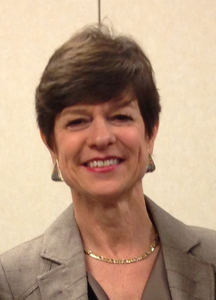343845
Proprioceptive Neuromuscular Facilitation
Beschreibung
Keine Merkmale angegeben
Mindmap von Laurie Schroder, aktualisiert more than 1 year ago
Mehr
Weniger

|
Erstellt von Laurie Schroder
vor etwa 11 Jahre
|
|
Zusammenfassung der Ressource
Proprioceptive Neuromuscular Facilitation
- Created by Kabat, Knott, &
Voss
- Treatment for movement
impairment
- Due to neurological conditions
- Due to injury or
surgery
- Due to neurological conditions
- Treatment for movement
impairment
- 10 Basic
Principles
- Manual
Contacts
- On the skin overlying target mm
groups
- Using a lumbrical
grip
- Using a lumbrical
grip
- On the skin overlying target mm
groups
- Body Position &
Mechanics
- Dynamic Clinician
Movement
- Mirrors Patient
Mvmnt
- Resistance created through clinician's body
weight
- Dynamic Clinician
Movement
- Stretch
- Utilizes the stretch
reflex
- Quick Stretch
Anmerkungen:
- A quick stretch from a lengthened position into a slightly more lengthened position facilitates a muscle and its agonists.
- Prolonged Stretch
Anmerkungen:
- A prolonged stretch inhibits muscle activity of the stretched muscle and its agonists.
- Utilizes the stretch
reflex
- Manual Resistance
- An internal or external
force
Anmerkungen:
- Internal resistance is generated by increased tone, tissues stiffness, and length. External resistance is a function of gravity, or manual or mechanical resistance.
- Resistance may facilitate
movement
Anmerkungen:
- Primarily by decreasing internal resistance through approximation or tactile input.
- Resistance may strengthen or train
MM
- An internal or external
force
- Irradiation
- Overflow, associated reactions,
reinforcement
- Response increases as resistance increases
- Tends to occur in predictable
patterns
- Overflow, associated reactions,
reinforcement
- Joint
Facilitation
- Traction facilitates
mobility
Anmerkungen:
- Traction also decreases pain.
- Approximation facilitates
stability
Anmerkungen:
- Through facilitation of proprioceptors and preparation for weight bearing. Weight bearing does not have to happen in only closed chain activities.
- Traction facilitates
mobility
- Timing of
Movement
- Timing is distal to
proximal
Anmerkungen:
- But, of course, development occurs in a proximal to distal direction.
- Postural control is a
precursor
- Functional Movement requires strength, range, and sequencing
control
- Timing is distal to
proximal
- Patterns of Movement
- Diagonal
Patterns
- Groups of MM work
synergistically
- Function does not occur in cardinal
planes
- Diagonal
Patterns
- Visual Cues
- Facilitate postural alignment & MM
contraction
- Facilitate postural alignment & MM
contraction
- Verbal Input
- Three phases
- Preparatory
Phase
- Action Phase
- Correction Phase
- Preparatory
Phase
- Three phases
- Manual
Contacts
- Biomechanical
Considerations
- BOS
- COG
- Number of Weight-Bearing
Joints
- Length of Lever
Arm
- BOS
- D1 Diagonal Patterns
- UE D1 Flexion
- Crossing a scarf across the shoulder
- Crossing a scarf across the shoulder
- UE D1 Extension
- Clicking a seat belt
- Clicking a seat belt
- LE D1 Flexion
- Crossed soccer kick
- Crossed soccer kick
- LE D1 Extension
- Supahstah!
- Supahstah!
- UE D1 Flexion
- D2 Diagonal Patterns
- UE D2 Flexion
- Tossing a bouquet
- Tossing a bouquet
- UE D2 Extension
- Sheathing a
sword
- Sheathing a
sword
- LE D2 Flexion
- Peeing on a
hydrant
- Peeing on a
hydrant
- LE D2 Extension
- Ballerina
- Ballerina
- UE D2 Flexion
- Scapular & Pelvic
Patterns
Anmerkungen:
- If the patient's body is facing the 3 o'clock mark
- 1 o'clock Anterior
Elevation
- 5 o'clock Anterior
Depression
- 7 o'clock Posterior
Depression
- 11 o'clock Posterior
Elevation
- Lifts & Chops
- Free Hand = Lead Hand
- If the lead hand follows D2 Flexion =
Lift
- Return is a Reverse
Lift
- Return is a Reverse
Lift
- If the lead hand follows D1 Extension =
Chop
- Return is a Reverse Chop
- Return is a Reverse Chop
- If the lead hand follows D2 Flexion =
Lift
- Free Hand = Lead Hand
- PNF Techniques
- Mobility (Stage
I)
- Rhythmic
Initiation
- Rhythmic
Rotation
- Hold Relax Active
Movement
- Contract
Relax
- Hold Relax
- Rhythmic
Initiation
- Stability (Stage II)
- Alternating
Isometrics
- Rhythmic
Stabilization
- Slow Reversal
Hold
- Alternating
Isometrics
- Controlled Mobility (Stage
III)
- Agonistic
Reversal
- Slow Reversal
Hold
- Slow Reversals
- Agonistic
Reversal
- Skill (Stage IV)
- Agonistic
Reversal
- Slow Reversal
Hold
- Slow Reversals
- Agonistic
Reversal
- Mobility (Stage
I)
Möchten Sie kostenlos Ihre eigenen Mindmaps mit GoConqr erstellen? Mehr erfahren.
